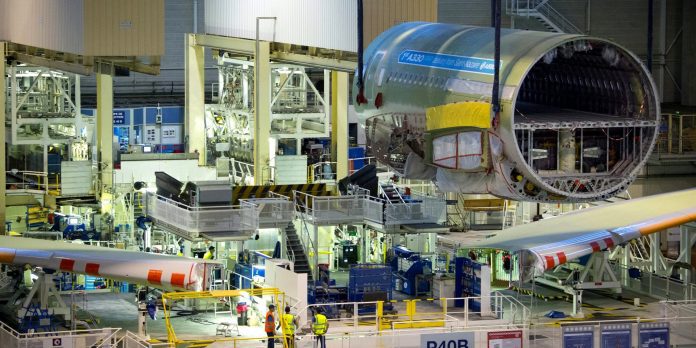European aerospace firm Airbus has a 10-year back-log of orders, explains Sébastien Boria, R&D technology leader at Airbus. “Which means we have no problem selling aircraft.”
Demand is high because the product is good, he says. The company, which has made strides as an innovator, is not interested in technology just to achieve a better product. “We have enough resources doing that already,” says Boria, speaking at the opening of HPE’s new innovation lab in Geneva.
Instead, the company’s challenge is to tighten the screws in its manufacturing processes. “Our main problem is to to deliver, and deliver on time… We need to deliver aircraft to have the right amount of customer satisfaction,” says Boria.
To this end, it has a loose set of guidelines – “four pillars, four governing rules” – for its innovations team to follow in pursuit of smarter manufacturing. Here, we consider each, over the course of two articles.
1 | Make it work first time, every time!
Like most manufacturing operations, Airbus’ reputation rises and falls with the quality of its products, coming out of its factories. Its success has been achieved, in large part, by the sweat of its factory workers. They retain a major influence, even in the era of automation.
“We are a company that is driven by lots of operations that have been performed, through the ages, by people,” says Boria. He gives an example: the company drills 120 million holes into every airplane on the production line. “It is like a Swiss cheese, filled with rivets” remarks Boria. Seventy-five per cent are drilled by hand.
Any kind of new-fangled industrial gadgetry has to pass muster. The idea of giving factory workers sub-standard technology – which disrupts efficiency, or undermines quality – is not to be considered. After all, they hold more than just drills in their hands – the business turns on their excellence.
Boria explains: “We can’t present a super new tool, fully electric, to replace an old pneumatic tool – and find because of a network disconnection, because active directory is not set properly, that, boom, it doesn’t work anymore. They will say, ‘take your bullshit tech, and come back when it is ready.’”
At the coal face, in live operations, in the hands of seasoned pros, new technology has to work, first time, and without fail.
2 | Make it work without question – no manuals!
More than this, new technology has to work intuitively. Boria explains the Airbus way, as old as the hills, is that knowledge is passed down between master and apprentice, until the apprentice masters the craft, and takes on a protege. This is the way the Airbus production line is geared, and the way people have always worked.
The tech has to fit with the people, and not the other ways around. Digital change has to be tactful. It is a problem, says Boria, just to disrupt the workforce, which built the business and retains the knowledge – “working with its hands, and with a full solution and training in its mind.”
It requires a “mindset change” from software engineers, tasked with integrating digital tools into the production line. “It is a problem to… de-allocate that [human knowledge and expertise] to a level where you have digitisation, which could be perceived as this super cop looking behind them at their work,” explains Boria.
Instead, new digital solutions for industry have to work out of the box, without a manual. “No one, I believe, reads a real manual to know how to use Facebook, or whatever systems like that. Technology has to be as simple as that,” says Boria.
Again, the tech logic has to ape human intuition. “When the trainee is good enough, he or she becomes the master. There are no books. We cannot break that. That mindset should not be corrupted.”
A new report and webinar on edge computing in industrial IoT setups, called AI and IoT at the cutting edge – when to move intelligence closer to the action, is available; go here for the report, go here for the webinar.

